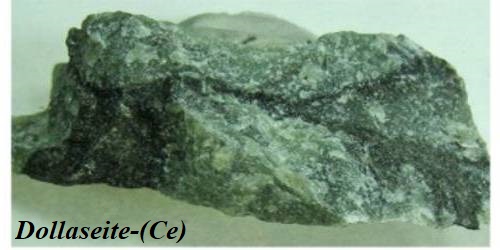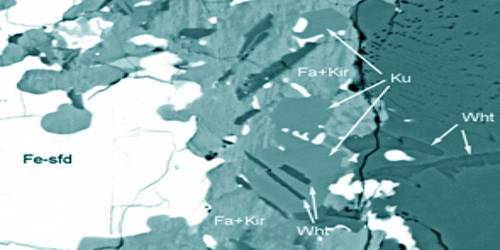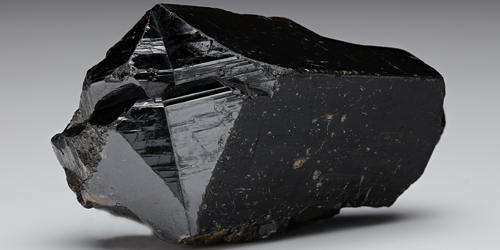Mottramite is hydrous vanadate of lead and copper occurring as a crystalline incrustation of a velvet-black color on sandstone at Mottram in Cheshire, England. It is an orthorhombic anhydrous vanadate hydroxide mineral, PbCu(VO4)(OH), at the copper end of the descloizite subgroup. It is a mineral composed of lead and copper vanadate. It is a member of the adelite-descloizite group. Mottramite, which is a copper-rich member, forms a series with descloizite, which is a zinc-rich member. Its rarity and attractiveness are the reason for the typically high prices one would expect to pay for a fine specimen.
It was discovered in 1876 and named for the locality, Mottram St Andrew, Cheshire, England, where ore was stockpiled, although it was probably mined from Pim Hill Mine, Shrewsbury, Shropshire, England.
Mottramite is an orthorhombic basic vanadate of lead, copper, and zinc occurring as green or brownish blades or black encrustations and forming a series with descloizite.
General Information
- Category: Vanadate minerals
- Formula: PbCu(VO4)(OH)
- Crystal system: Orthorhombic
- Crystal class: Dipyramidal (mmm)
- Colour Grass-green, olive-green, yellow-green, siskin-green, blackish brown, nearly black

Properties
Mottramite can form sparkling crusts that have a nice luster and striking green color. It is quite soft, with Mohs hardness 3 to 3 1⁄2, just a little harder than calcite. The hardness is slightly greater on crystal surfaces. It is a heavy mineral, with a specific gravity of 5.9, because of the lead content. It is readily soluble in acids.
- Formula mass: 402.69 g/mol
- Crystal habit: Encrustations, aggregates of plume-like forms, and radial crystals
- Cleavage: None observed
- Fracture: Irregular/uneven, sub-conchoidal
- Tenacity: Brittle
- Mohs scale hardness: 3 – 3 1⁄2
- Luster: Greasy
- Streak: Yellowish green
- Diaphaneity: Transparent, opaque
- Specific gravity: 5.9
- Optical properties: Usually biaxial (-) rarely biaxial (+)
Occurrence
The type locality is Mottram St Andrew, Cheshire, England, UK, and type material is conserved at the Natural History Museum, London 52314-52315. It is a somewhat common secondary mineral that forms in oxidized vanadium-rich base metal deposits.
Mottramite is a secondary, supergene mineral found principally in the oxidized zones of vanadium bearing base metal deposits, especially sandstones. Additional locations include the United States, Chile, Namibia, and Zambia among many others.
Associated minerals are descloizite, duftite, mimetite, wulfenite, cerussite, azurite, and dioptase.
















